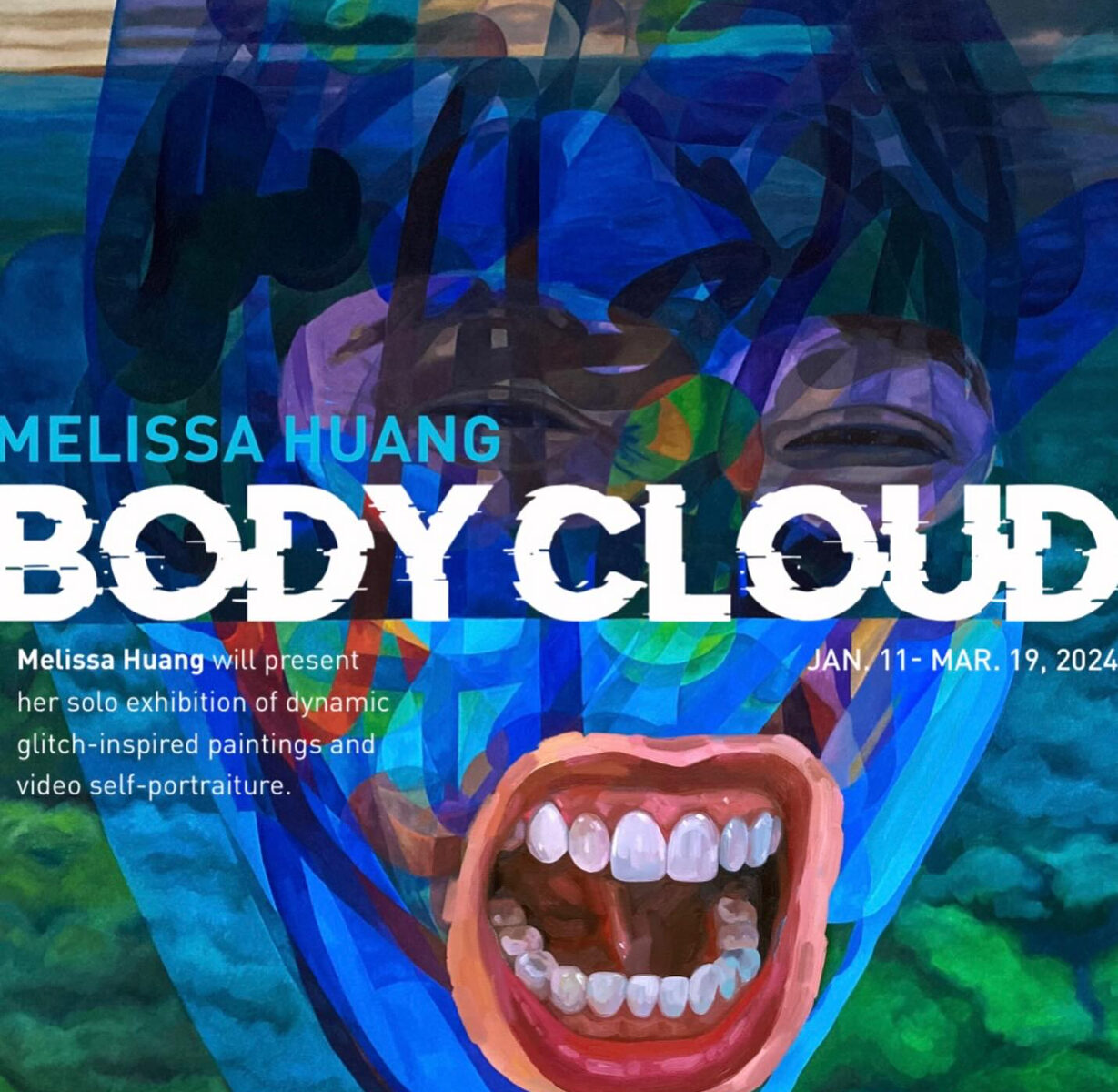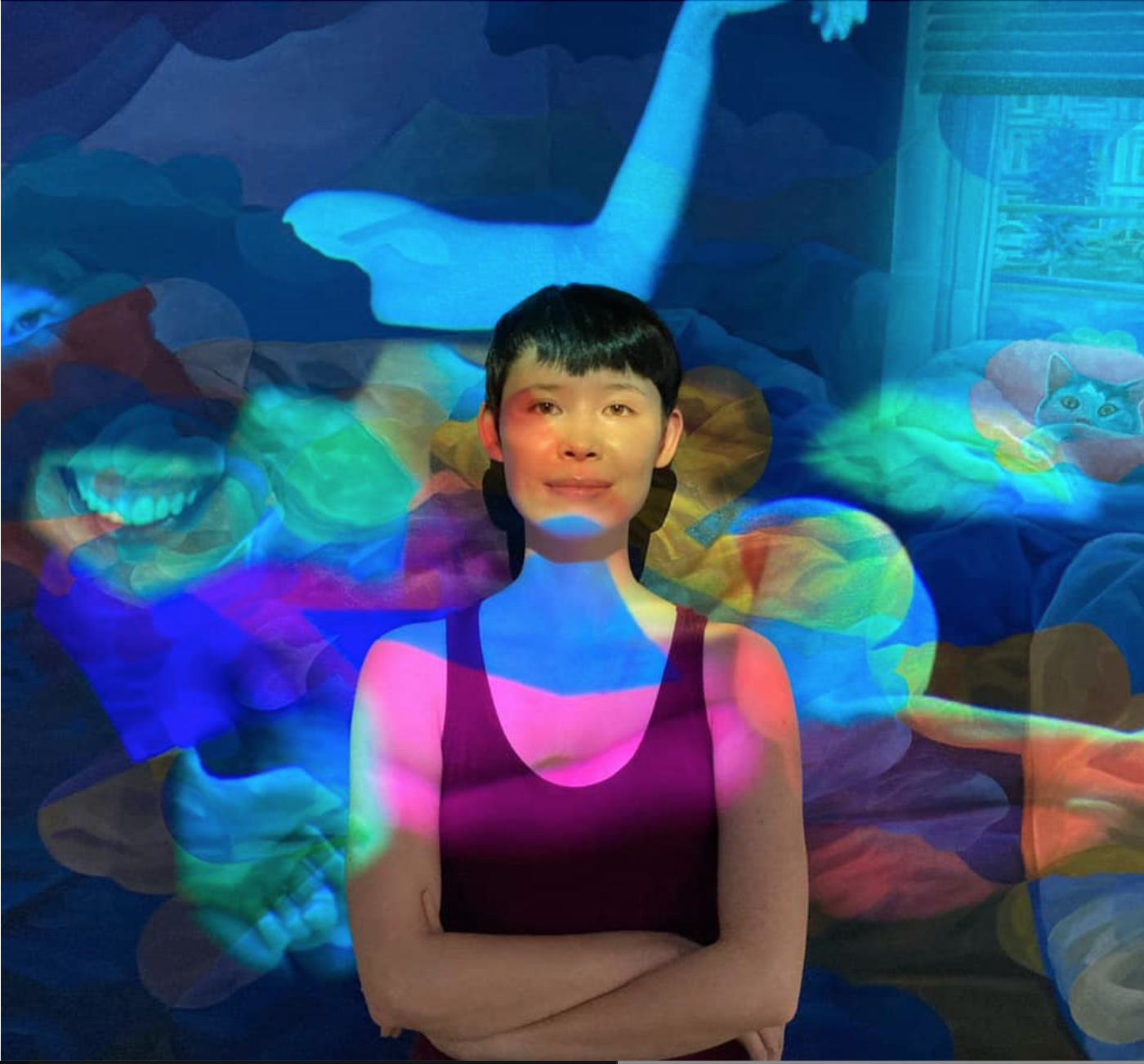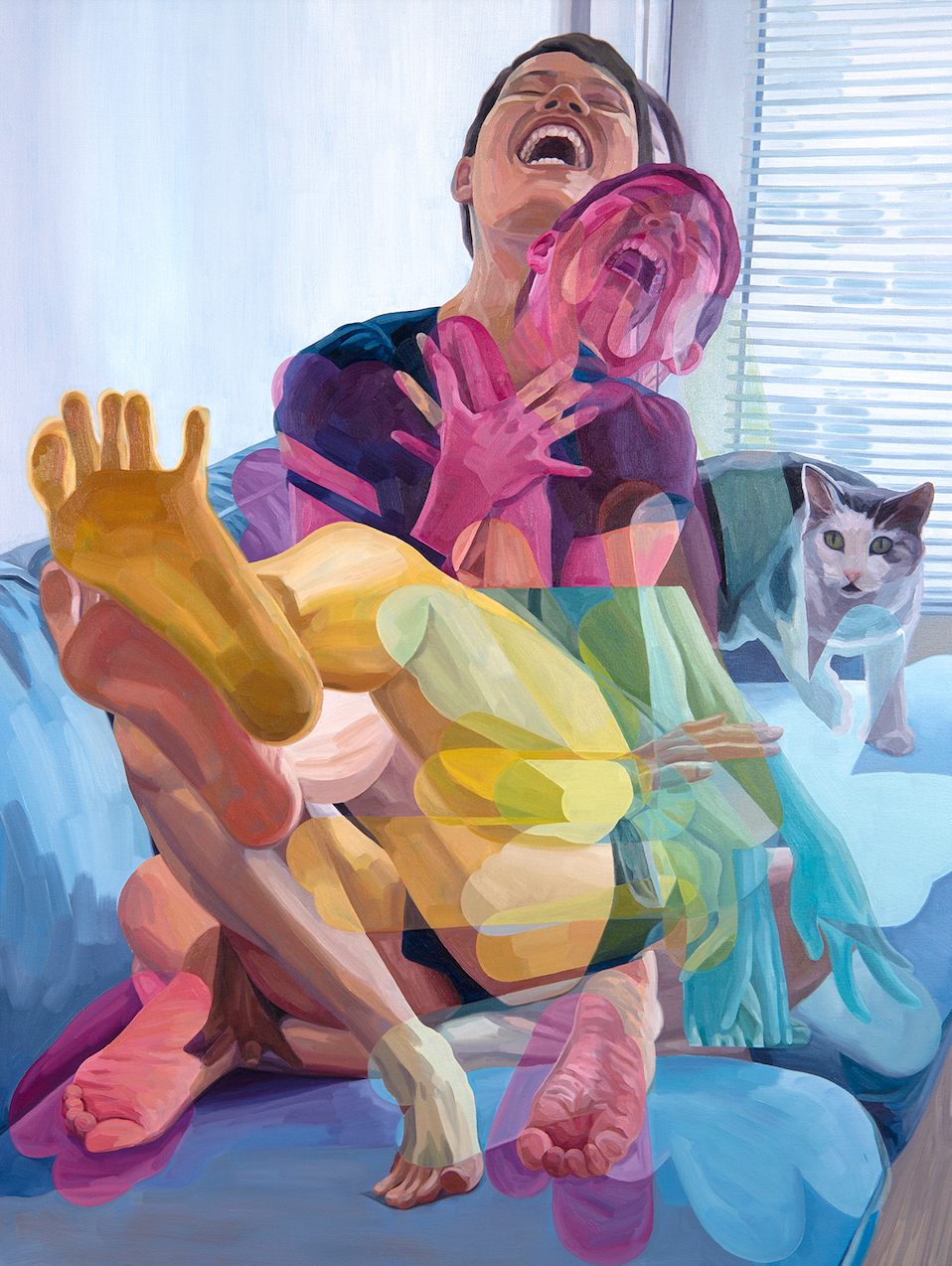Melissa Huang’s solo show, Body Cloud to open at Brenau’s Leo Castelli Gallery in January

 Melissa Huang will be have a solo exhibition of her dynamic glitch-inspired paintings and video self-portraiture Jan. 11 – March 19th, 2024 in Leo Castelli Gallery located in the John S. Burd Performing Art Center at Brenau University.
Melissa Huang will be have a solo exhibition of her dynamic glitch-inspired paintings and video self-portraiture Jan. 11 – March 19th, 2024 in Leo Castelli Gallery located in the John S. Burd Performing Art Center at Brenau University.
An opening reception will be held from 5:30- 7:00 PM, Jan 11th at Leo Castelli Gallery with an Artist Talk that will be held in the lobby just outside the doors of Leo Castelli Gallery.
This event is Free and Open to the Public
ARTIST BIOGRAPHY
Melissa Huang (b. 1992) is an interdisciplinary artist living in Statesboro, Georgia, where she is an Assistant Professor of Art at Georgia Southern University. Melissa graduated from the Ernest G. Welch School of Art & Design at Georgia State University with her MFA in Drawing and Painting (2021) and the Rochester Institute of Technology with her BFA in Fine Arts Studio (2014). Her glitch-inspired painting and video self-portraiture studies the desire, failure, and dissonance associated with portraying an idealized self for a largely digital audience. Melissa has exhibited nationally and abroad with recent solo exhibitions at the Marietta Cobb Museum of Art, the Albany Museum of Art, and Whitespace. Melissa has a background working in galleries, museums, archives, and art appraisal. She is represented by Whitespace in Atlanta, GA. You can see more of Melissa’s artwork on Instagram (@melissahuangart) or her website (www.melissahuang.com).
Melissa Huang, Reflecting Pool, oil on canvas with video projection
<p><a href=”https://vimeo.com/789497070″>Melissa Huang, Reflecting Pool, oil on canvas with video projection, 40" x 60", 2023</a> from <a href=”https://vimeo.com/user109682455″>Melissa Huang</a> on <a href=”https://vimeo.com”>Vimeo</a>.</p>

Melissa Huang, Here Kitty Kitty, oil on canvas, 48 x 36 inches
In Melissa Huang’s glitch-inspired paintings and video self-portraiture she studies the desire, failure, and dissonance of portraying an idealized self for a real and digital audience. Adopting a perfect girl persona has never been easier for Huang; however, the physical and emotional roles that society expects women to fulfill have never been further out of reach.
Like many, Huang is trying to embody a person-shaped daydream of the self. She knows what she should be, what she wants to be. “A perfect version of myself is always just around the corner, states Huang. I can catch a glimpse of her, or sometimes feel her slipping from my fingertips. She’s uninhibited, wild, beautiful, everybody’s best friend- an exquisite flicker on a screen.”
The non-daydream version of Huang is foggier. She cries, worries, and obsesses. She projects success but never fully enjoys it. She’s learning to love herself, but it’s harder than she thought.
Huang states: “I find myself questioning the objective reality of my body: is a purely representational, painted version of myself more authentic than an abstracted and amorphous body cloud? Am I capturing the daydream in unrestrained washes of color, shape, and movement, or something closer to reality?”
“A different version of you exists in the minds of your family, friends, colleagues, strangers, and digital audience; none of which are your complete identity. Rather, each of these fragments come together to paint a fuller picture of “you”. We form our identities through the Sartrean act of looking at others, being looked at, and understanding that we are the subject of “the look”. Contemporary culture is obsessed with perfection, and digital image manipulation has blurred the lines between reality and the idealized self, creating an unsettling gap between who we really are and how we wish to be perceived.”
In recent work, Huang considers how those of us, coming of age with the internet and social media, have constructed alternative identities online—fantasies, really—that bear little resemblance to the person IRL. “I transform my image beyond believable authenticity, states Huang, it is fragmented, replicated, and distorted to the point of becoming disconnected from my real body. Ultimately, I use this series of works to dismantle the complicated archetypes to which women must conform in our ever-changing cyber landscape.”
Huang’s work utilizes traditional oil painting techniques with a focus on direct painting and limited glazing. She uses a wide range of hyper-saturated color throughout to give character to each fragmented portrait and to reference the glitched feeling of being deconstructed online and IRL. Washes of color create small windows to another world. Huang repeats and layers her self-portrait on the canvas to represent multiple versions of the self and the emotional push and pull she feels between them.
